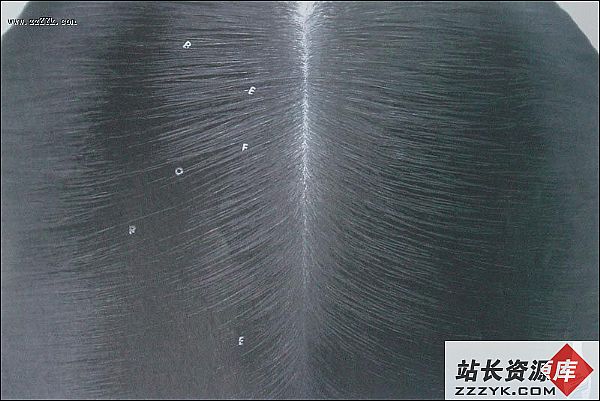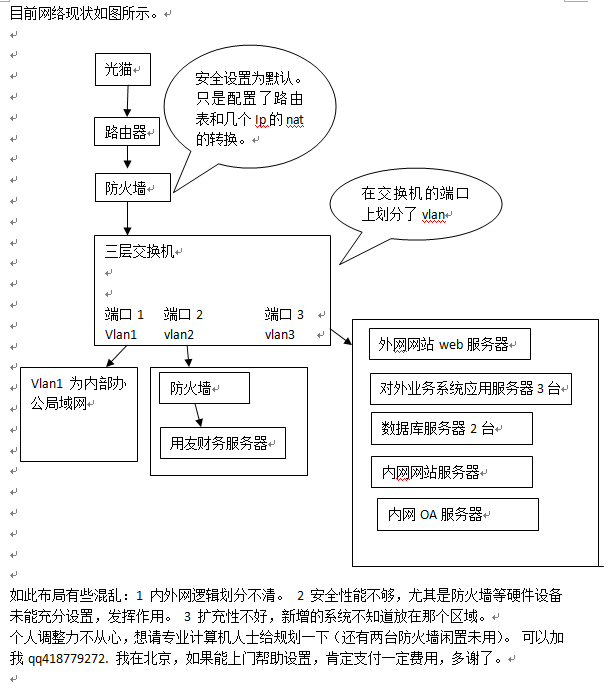浅谈NT下Ring3无驱进入Ring0的汇编实现
文章作者:hopy(Kf2b@msn.com)
信息来源:邪恶八进制信息安全团队(www.eviloctal.com)注意:本文章首发hopy.blogchina.com和blog.csdn.net/mydo,后由与原创作者友情提交到邪恶八进制信息安全团队技术论坛。
关键字:NT,Ring0,无驱。
测试环境:Windows 2000 SP4,Windows XP SP2,Windows 2003 未测试在NT下无驱进入Ring0是一个老生常谈的方法了,网上也有一些C代码的例子,我之所以用汇编重写是因为上次在
[原创/探讨]Windows 核心编程研究系列之一(改变进程 PTE)
的帖子中自己没有实验成功(其实已经成功了,只是自己太马虎,竟然还不知道 -_-b),顺面聊聊PM(保护模式)中的调用门的使用情况。鉴于这些都是可以作为基本功来了解的知识点,所以对此已经熟悉的朋友就可以略过不看了,当然由于本人水平有限,各位前来“挑挑刺”也是非常欢迎的,呵呵。下面言归正传,我们知道在NT中进入Ring0的一般方法是通过驱动,我的Windows 核心编程研究系列 文章前两篇都使用了
这个方法进入Ring0 完成特定功能。现在我们还可以通过在Ring3下直接写物理内存的方法来进入Ring0,其主要步骤是:
0 以写权限打开物理内存对象;
1 取得 系统 GDT 地址,并转换成物理地址;
2 构造一个调用门;
3 寻找 GDT 中空闲的位置,将 CallGate 植入;
4 Call植入的调用门。前面已打通主要关节,现在进一步看看细节问题:
[零] 默认只有 System 用户有写物理内存的权限 administrators 组的用户只有读的权限,但是通过修改用户安全对象中的DACL 可以增加写的权限:Copy code
_SetPhyMemDACLs proc uses ebx edi esi
_hPhymem:HANDLE,
_ptusrname:dword
local @dwret:dword
local @htoken:HANDLE
local @hprocess:HANDLE
local @个
local @OldDACLs:PACL
local @SecurityDescriptor:PSECURITY_DESCRIPTOR
local @Access:EXPLICIT_ACCESS
mov @dwret,FALSE
invoke RtlZeroMemory,addr @NewDACLs,sizeof @NewDACLs
invoke RtlZeroMemory,addr @SecurityDescriptor,
sizeof @SecurityDescriptor
invoke GetSecurityInfo,_hPhymem,SE_KERNEL_OBJECT,
DACL_SECURITY_INFORMATION,NULL,NULL,
addr @OldDACLs,NULL,
addr @SecurityDescriptor
.if eax != ERROR_SUCCESS
jmp SAFE_RET
.endif
invoke RtlZeroMemory,addr @Access,sizeof @Access
mov @Access.grfAccessPermissions,SECTION_ALL_ACCESS
mov @Access.grfAccessMode,GRANT_ACCESS
mov @Access.grfInheritance,NO_INHERITANCE
mov @Access.stTRUSTEE.MultipleTrusteeOperation,
NO_MULTIPLE_TRUSTEE
mov @Access.stTRUSTEE.TrusteeForm,TRUSTEE_IS_NAME
mov @Access.stTRUSTEE.TrusteeType,TRUSTEE_IS_USER
push _ptusrname
pop @Access.stTRUSTEE.ptstrName
invoke GetCurrentProcess
mov @hprocess,eax
invoke OpenProcessToken,@hprocess,TOKEN_ALL_ACCESS,
addr @htoken
invoke SetEntriesInAcl,1,addr @Access,
@OldDACLs,addr @NewDACLs
.if eax != ERROR_SUCCESS
jmp SAFE_RET
.endif
invoke SetSecurityInfo,_hPhymem,SE_KERNEL_OBJECT,
DACL_SECURITY_INFORMATION,NULL,NULL,
@NewDACLs,NULL
.if eax != ERROR_SUCCESS
jmp SAFE_RET
.endif
mov @dwret,TRUE
SAFE_RET:
.if @NewDACLs != NULL
invoke LocalFree,@NewDACLs
mov @NewDACLs,NULL
.endif
.if @SecurityDescriptor != NULL
invoke LocalFree,@SecurityDescriptor
mov @SecurityDescriptor,NULL
.endif
mov eax,@dwret
ret
_SetPhyMemDACLs endp
[一] 可以在Ring3下使用SGDT指令取得系统GDT表的虚拟地址,这条指令没有被Intel设计成特权0级的指令。据我的观察,在 Windows 2000 SP4 中 GDT 表的基址都是相同的,而且在虚拟机VMware5.5 虚拟的 Windows 2000 SP4中执行 SGDT 指令后返回的是错误的结果,在虚拟的 Windows XP 中也有同样情况,可能是虚拟机的问题,大家如果有条件可以试一下:
local @stGE:GDT_ENTRY
mov @dwret,FALSE
lea esi,@stGE
sgdt fword ptr [esi]
assume esi:ptr GDT_ENTRY
;xxxxxxxxxxxxxxxxxxxxxxxxxxxxxxxxxxxxxxxxxxxx
;在 VMware 虚拟环境下用以下两条指令替代
;只用于 Windows 2000 SP4
;mov [esi].Base,80036000h
;mov [esi].Limit,03ffh
;xxxxxxxxxxxxxxxxxxxxxxxxxxxxxxxxxxxxxxxxxxxx
mov eax,[esi].Base
invoke @GetPhymemLite,eax
.if eax == FALSE
jmp quit
.endif
下面就是虚拟地址转换物理地址了,这在Ring0中很简单,直接调用MmGetPhysicalAddress 即可,但在Ring3中要另想办法,还好系统直接将 0x80000000 – 0xa0000000 影射到物理0地址开始的位置,所以可以写一个轻量级的GetPhysicalAddress来替代。:)Copy code
@GetPhymemLite proc uses esi edi ebx _vaddr
local @dwret:dword
mov @dwret,FALSE
.if _vaddr < 80000000h
jmp quit
.endif
.if _vaddr >= 0a0000000h
jmp quit
.endif
mov eax,_vaddr
and eax,01ffff000h ;or sub eax,80000000h
mov @dwret,eax
quit:
mov eax,@dwret
ret
@GetPhymemLite endp[二]调用门在保护模式中可以看成是低特权级代码向高特权级代码转换的一种实现机制,如图1所示(由于本人较懒,所以借用李彦昌先生所著的80x86保护模式系列教程 中的部分截图,希望李先生看到后不要见怪 ^-^):
图1
要说明的是调用门也可以完成相同特权级的转换。一般门的结构如图2所示:
图2
简单的介绍一下各个主要位置的含义:Offset 和 Selector 共同组成目的地址的48位全指针,这意味着,如果远CALL指令指向一个调用门,则CALL指令中的偏移被丢弃;
P位置位代表门有效,DPL是门描述符的特权级,后面要设置成3,以便在Ring3中可以访问。TYPE 是门的类型,386调用门是 0xC ,Dword Count 是系统要拷贝的双字参数的个数,后面也将用到。下面是设置CallGate的代码:Copy code
mov eax,_FucAddr
mov @CallGate.OffsetL,ax ;Low Part Addr Of FucAddr
mov @CallGate.Selector,8h ;Ring0 Code Segment
mov @CallGate.DCount,1 ;1 Dword
mov @CallGate.GType,AT386CGate ;Must A CallGate
shr eax,16
mov @CallGate.OffsetH,ax ;Low Part Addr Of FucAddr
[三] 既然可以读些物理内存了,也知道了GDT的物理基地址和长度,所以可以通过将GDT整个读出,然后寻找一块空闲的区域来植入前面设置好的CallGate:Copy code
;申请一片空间,以便存放读出的GDT
Invoke VirtualAlloc,NULL,@tmpGDTLimit,MEM_COMMIT,
PAGE_READWRITE
.if eax == NULL
jmp quit
.endif
mov @pmem,eax
invoke @ReadPhymem,@tmpGDTPhyBase,@pmem,@tmpGDTLimit,
_hmem
.if eax == FALSE
jmp quit
.endif
mov esi,@pmem
mov ebx,@tmpGDTLimit
shr ebx,3
;找到第一个GDT描述符中P位没有置位的地址
mov ecx,1
.while ecx < ebx
mov al,byte ptr [esi+ecx*8+5]
bt ax,7
.if CARRY?
.else
jmp lop0
.endif
Inc ecx
.endw
invoke VirtualFree,@pmem,0,MEM_RELEASE
jmp quit
lop0:
lea eax,[ecx*8]
mov @OffsetGatePos,eax
add @PhyGatePos,eax
mov esi,@pmem
add esi,eax
invoke RtlMoveMemory,addr oldgatebuf,esi,8
;释放内存空间
invoke VirtualFree,@pmem,0,MEM_RELEASE
[四] 现在主要工作基本完成了,剩下的就是设计一个运行在Ring0中的子函数,在这个子函数中我将调用Ring0里面真正的MmGetPhysicalAddress来取得实际的物理地址,所以这个函数要有一个输入参数用来传递要转换的虚拟地址,并且还要考虑到如何获取返回的物理地址(EDX:EAX)。在网络上的C版本代码中,这是通过定义几个全局变量来传递的,因为没有发生进程切换,所以可以使用原进程中的一些变量。然而我在传递虚拟地址上采用了另一种做法,就是通过实际形参来传递的:Copy code
Ring0Fuc proc ;_vaddr
;手动保存
push ebp
mov ebp,esp
sub esp,4
mov eax,[ebp+0ch]
mov [ebp-4],eax ;first local val
pushad
pushfd
cli
mov eax,[ebp-4]
;调用真正的 MmGetPhysicalAddress.
invoke MmGetPhysicalAddress,eax
mov phymem_L,eax
mov phymem_H,edx
popfd
popad
;手动还原
mov esp,ebp
pop ebp
retf 4
Ring0Fuc endp
最后,通过一个远CALL来调用这个调用门:Quote:
lea edi,FarAddr
push _vaddr
call fword ptr [edi]通过亲手编码,可以对调用门、远调用等一些80386+保护模式中的概念
补充:综合编程 , 安全编程 ,






